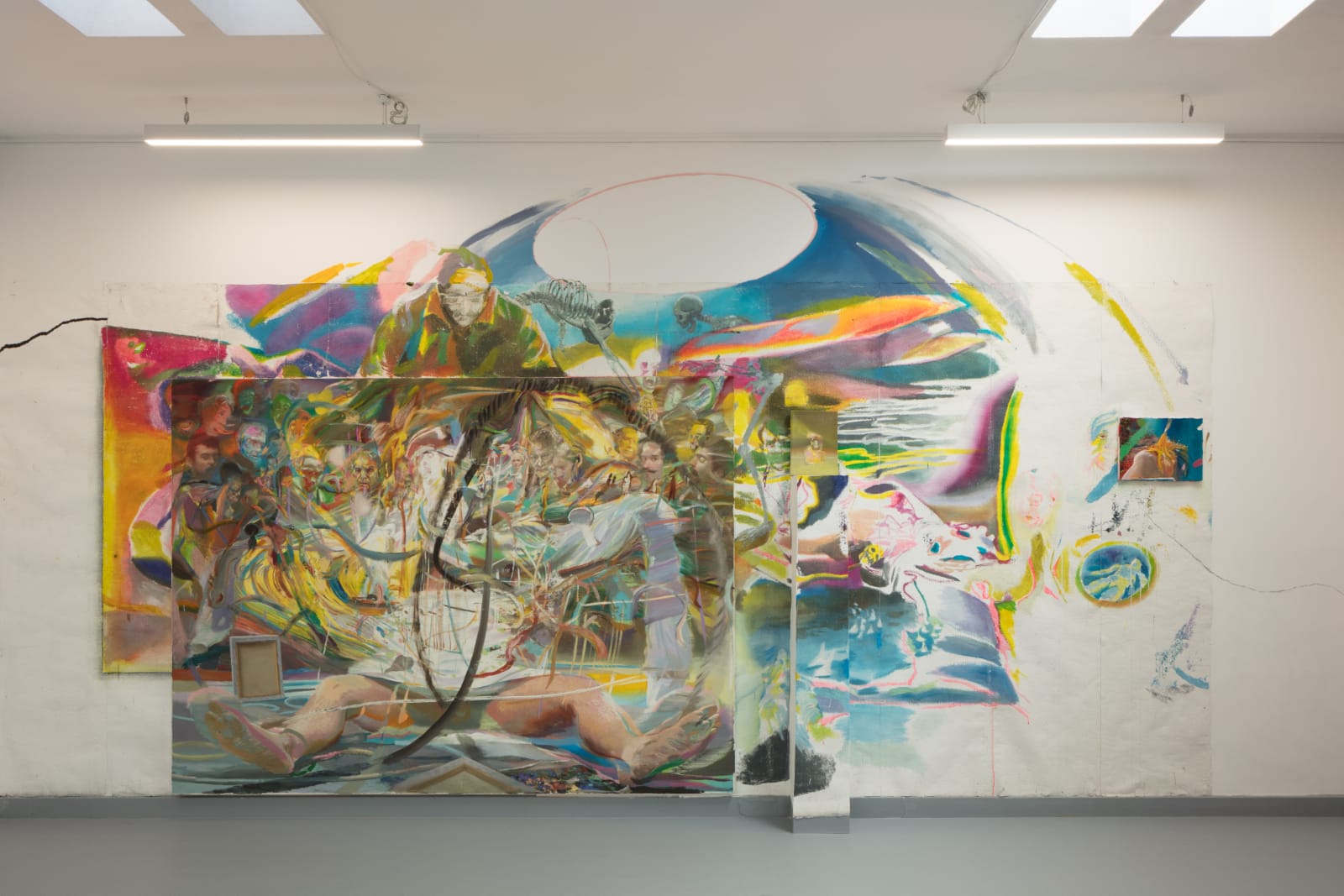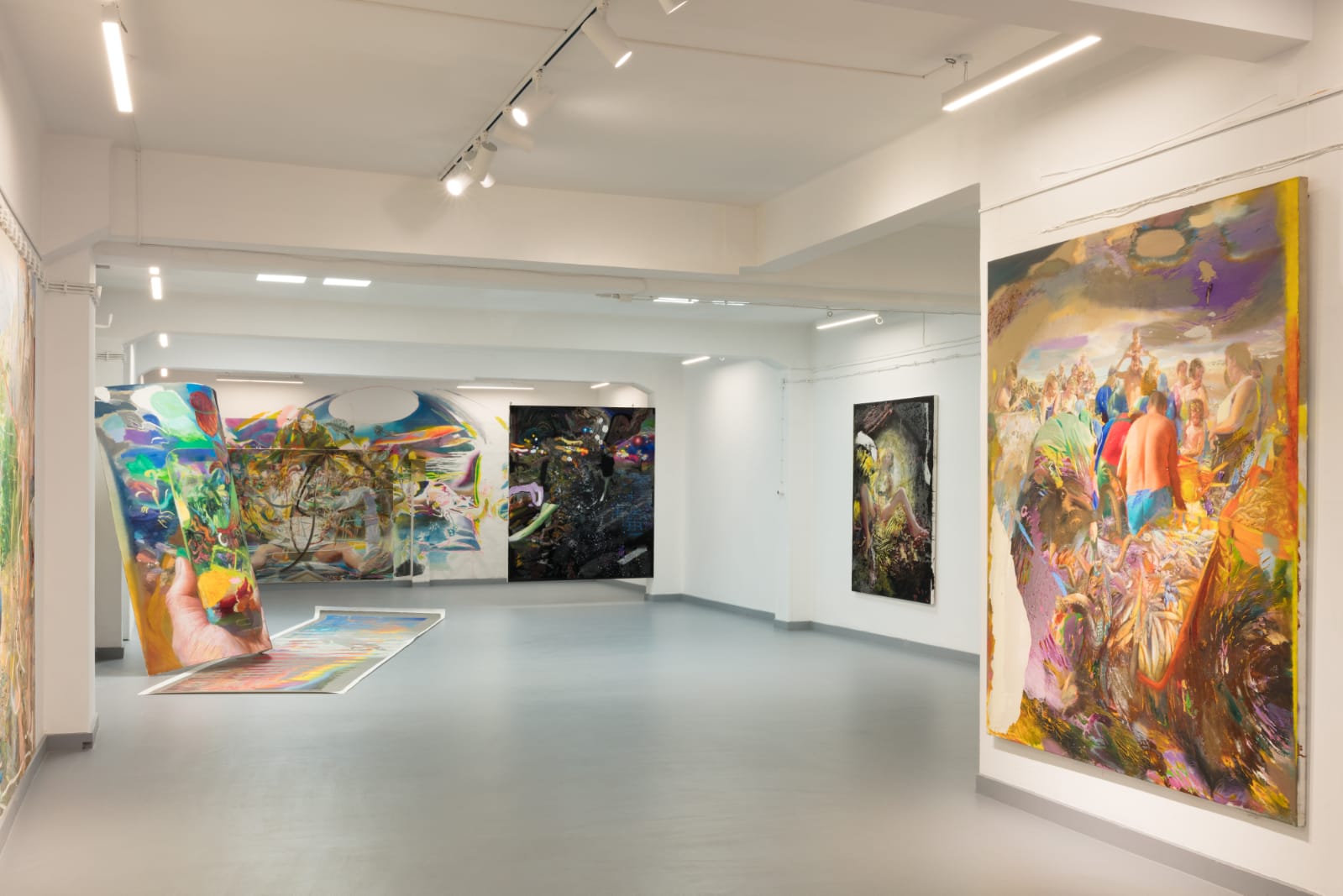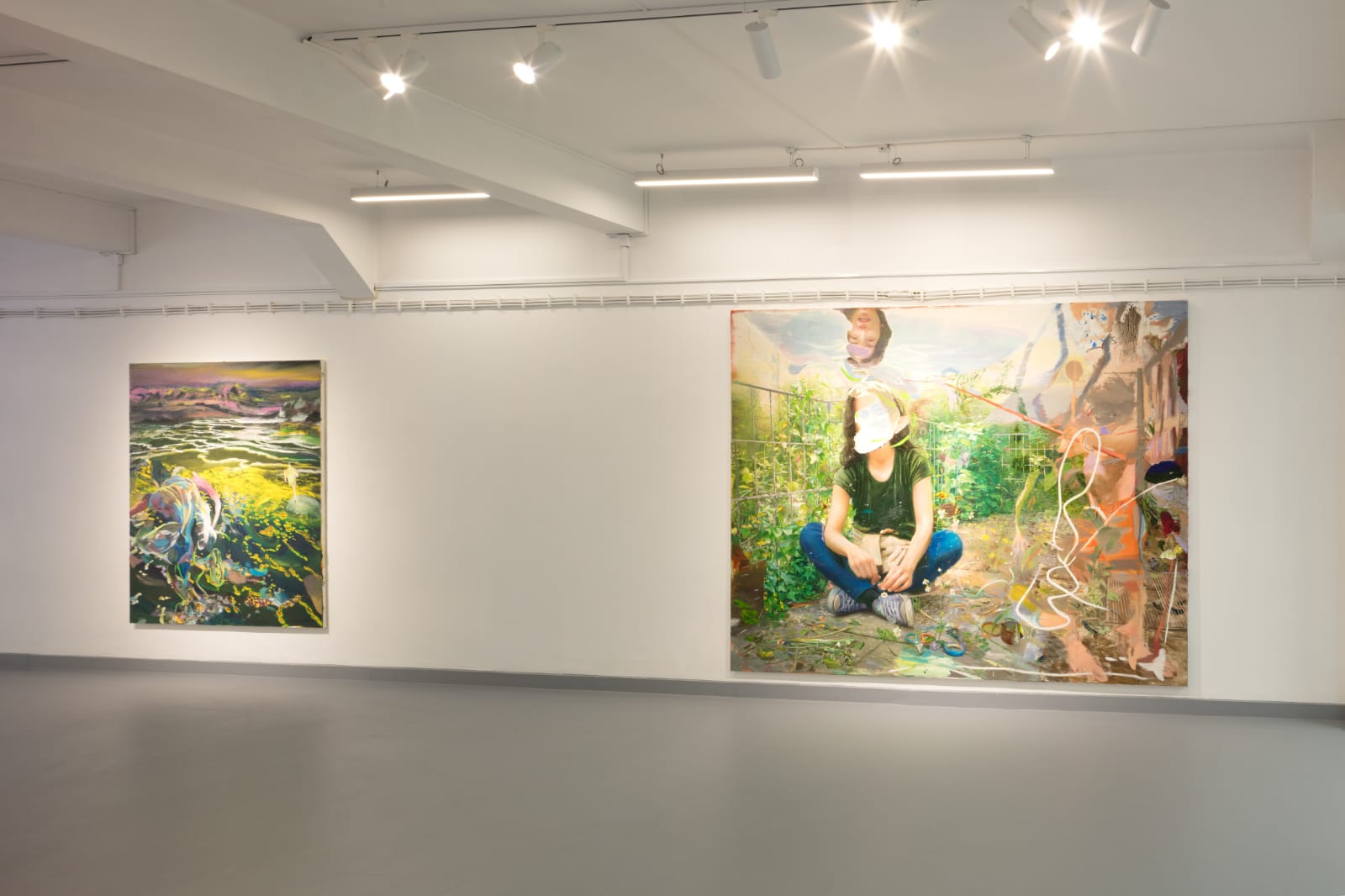
NIGHT´S LIGHT, BODY AND TURTLE | SOLO SHOW
ARTEMIS GALLERY - LISBON
July 23 - August 27, 2021
INSTALLATION VIEWS & WORKS EXHIBITED
ABOUT
In this exhibition, we can expect to see a research field, in which the artist refers to a “human condition and digs deeply between introspection and the desire for freedom”. This show will be presented until August 27th, 2021. Besides this visual discovery, Mauro Zanchi’s essay promises that the artist “reveals himself, for the first time, with a personality and transparency that becomes more evident than in previous times. And it is, perhaps, a guide that doesn’t represent the painter or an alter ego, but goes beyond autobiographical connotations, to evoke more universal forces and issues.” On Night’s Light, Body and Turtle, “(...) everything is being called into question, awaiting new negotiations with what we call 'truth'.
PRESS KIT
MAURO ZANCHI´S ESSAY, 2021
The paintings of the series, I, like (many of) you evoke possibilities of going beyond the first semblance of vision. Artistic vision is a threshold to cross over both forward and backward, towards the zenith and towards the chthonic world. Naturally, I am referring to an ecstatic experience, which is not just an imaginative projection but something capable of transforming perspective and the direction of thought. It is something belonging to the field of multisensoriality, to the polysemy of feeling. In going beyond, the potential of perception extends: one begins from an almost cosmic shift, from a vacuum enriched with chemistry, and begins from a transparent bed where anything can happen. Giuseppe Gonella begins with a darkness, one that includes fear, such as a journey on foot in a night full of noises and pitfalls. He begins with a black background, reflecting as little light as possible. This darkness provides a clean slate from which to begin again, to bring new appearances into the world. In this blackness, which exists in the first degree of the Great Work, one works with secret fire, making the luminous glows of the albedo appear. In “Night's light, body and turtle” (2021) and “Road not taken” (2020), the human body is immersed in a psychedelic space, where the encounter between figure and abstraction suggests the connections of transcurrence known to quantum physics, where past, present and future can coincide in the perception of a more extended instant. Each ever-present image continues its process of metamorphosis in the flow of becoming. In this dimension, colors are meant to be enjoyed and interpreted as a separate language, that of visionary seers, who transmit their perceptions of reality in a dreamlike way. Then, even the figurations take over. Yet, at the same time, the artist resumes the landscape within an ultra-thin advance, as through a digital space, where images form through processual passages, with various media, at different times, with multiple points of view. In his experiential paintings, nature is sucked up in the same kind of way a smartphone will buffer. In Night's light body and turtle, there is the figure of a material born through accident and incidence. A girl is walking towards the viewer (in Copenhagen). The setting is nocturnal. The work took shape while it was snowing outside. And the continuous descent of white flakes from heaven to earth simultaneously induced a dripping on the painting, as in a visionary state of ecstasy.
Giuseppe Gonella's confrontation with the endless stream of everyday existence enters into a diegetic relationship through investigation of the pictorial medium. The artist offers his investigation into the danger of lucidity. The answer is a powerful slap, as it has been rendered in multiple versions through the works "I, love (many of) you" and "The slap". In that powerful slap, a contortion of the body is represented, of a body that speaks of painting. But clearly this hand does not clash only with pictorial research. The image that the painter wants to represent has a much deeper core than the one that is made visible in that act of the slap. The artist reveals himself, for the first time, with a personality and transparency that become more evident than in previous times. It is perhaps a guide that does not represent the painter or an alter ego, but goes beyond autobiographical connotations, to evoke forces and issues that are more universal . The universality of the images is an important aspect and a conflict is created there, because in the universal there is a vulnerability, especially in the comparison of the artist to the other people he owes something, in the beacon that directs his research.
During the period of isolation due to Covid-19, Gonella, in his studio, imagined the comparison with figures of masters of the past, like a supertemporal trip. And the beloved artists appeared, as if they came to make a studio visit. The pinhole (in which visions of the past have passed) aspires to produce a fantasized image and to project it backwards into the artist's consciousness: Gonella evokes something similar to Courbet's Atelier; the transposition of a symposium with past masters that has not happened before, within a re-enactment that is not only dreamlike but also open to creative flashes, handover and potential development of intuitions. Little by little, whispers of images are formed, figures from the past that overlap with those of contemporary colleagues or friends, allegories of various interpretative declinations. The materialization of a failed dialogue has triggered new shifts. From here, the pictorial delirium has extended its connections and links to meaning. The set of figures has become an image full of dreams, fears, mysterious landscapes and irruptions of color, where the auras of the admired and loved painters shimmer. And now, again, everything is being called into question, awaiting new negotiations with what we call “truth”.
‘Night´s light, body and turtle’ originally was written on the occasion of the exhibition ‘Night´s light, body and turtle’, Artemis Gallery, Lisbon, PT. Copyright © 2021 Mauro Zanchi
MAURO ZANCHI- A BIOGRAPHY
Mauro Zanchi his is professor, art critic, curator and director of museo temporaneo BACO (Base Arte Contemporanea Odierna ) in Bergamo (IT) since 2011. He wrote many Art Essay and critics with various publish companies and art magazines; Among others Giunti, Silvana Editoriale, Electa, Mousse, CURA, Skinnerboox, Moretti & Vitali e Corriere della Sera. He writes for Art e Dossier, Doppiozero, Atpdiary e La balena bianca.
Artemis gallery
Av. João Crisóstomo 65,
1050-126 Lisbon



